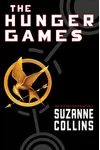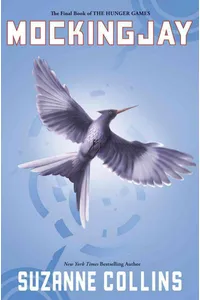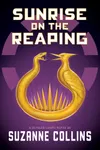Step into the thrilling world of The Hunger Games, where survival is a spectacle and rebellion sparks hope! Suzanne Collins’ dystopian trilogy, set in the oppressive nation of Panem, follows Katniss Everdeen, a fierce teenager thrust into a deadly televised contest. With its gripping blend of action, romance, and social commentary, this young adult saga has captivated millions.
From its 2008 debut, The Hunger Games redefined dystopian fiction, blending heart-pounding drama with sharp critiques of power and media. Whether you’re new to Panem or a longtime fan, Katniss’s journey from hunter to revolutionary icon is a wild ride you won’t forget.
How The Hunger Games Began
Suzanne Collins drew inspiration for The Hunger Games from Greek mythology’s Theseus and the Minotaur, as well as reality TV’s voyeuristic allure. While channel-surfing between war coverage and reality shows, Collins envisioned a world where entertainment masked tyranny. Published in 2008 by Scholastic, the first book’s success sparked a trilogy, cementing Collins as a visionary in young adult literature.
The Heart of The Hunger Games
The trilogy—The Hunger Games (2008), Catching Fire (2009), and Mockingjay (2010)—follows Katniss Everdeen in Panem, a nation divided into 12 districts ruled by the Capitol. In the first book, Katniss volunteers for the Hunger Games, a brutal annual contest where tributes aged 12–18 fight to the death. Catching Fire escalates the stakes as Katniss’s defiance ignites rebellion, while Mockingjay chronicles her role in a full-scale revolution.
The series shines through its themes: oppression, as the Capitol exploits the districts; media manipulation, with the Games as propaganda; and sacrifice, embodied by Katniss’s choices. Collins’ straightforward prose and vivid world-building immerse readers in Panem’s stark contrasts—lavish Capitol excess versus district poverty. Katniss’s resilience and moral struggles make her a compelling, relatable heroine.
A prequel, The Ballad of Songbirds and Snakes (2020), explores a young Coriolanus Snow, the trilogy’s future villain, adding depth to Panem’s origins. Together, the books weave a thrilling narrative that’s as thought-provoking as it is entertaining.
Why The Hunger Games Resonates
The Hunger Games transformed young adult dystopian fiction, inspiring hits like Divergent and The Maze Runner. Its 2012–2015 film adaptations, starring Jennifer Lawrence, grossed nearly $3 billion, amplifying its cultural reach. Fans adore Katniss as a symbol of resistance, and the series’ exploration of inequality and authoritarianism remains timely. Book clubs, fan fiction, and cosplay keep Panem alive, proving its enduring appeal.
- About The Hunger Games
- Number of books: 4 (3 in the main trilogy, 1 prequel)
- Publication years: 2008–2010 (trilogy), 2020 (prequel)
- Awards: Publishers Weekly Best Book (2008), California Young Reader Medal (2011)
- Global sales: Over 100 million copies by 2020
Grab The Hunger Games and dive into Panem’s heart-pounding dystopian world! Whether you’re rooting for Katniss or unraveling the Capitol’s schemes, this series promises an unforgettable adventure.




